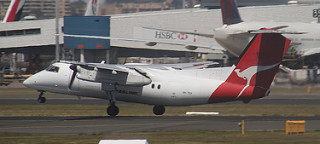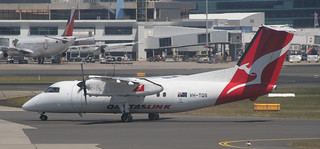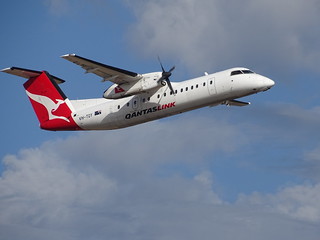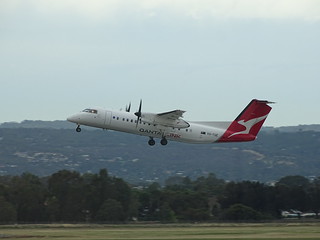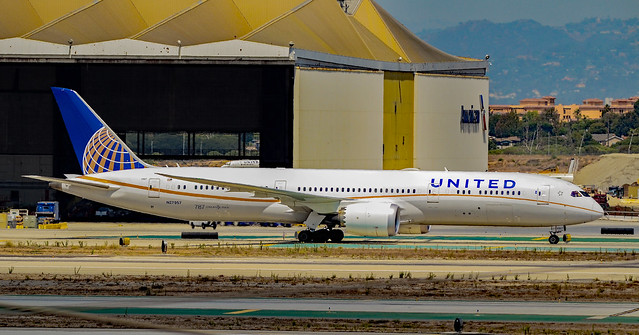Eastern Australia DH8C at Adelaide on Apr 24th 2015, obstacle proximity warning on approach to Adelaide
Last Update: February 5, 2018 / 16:50:21 GMT/Zulu time
Incident Facts
Date of incident
Apr 24, 2015
Classification
Report
Airline
Eastern Australia Airlines
Flight number
QF-2274
Departure
Port Lincoln, Australia
Destination
Adelaide, Australia
Aircraft Registration
VH-TQM
Aircraft Type
De Havilland Dash 8 (300)
ICAO Type Designator
DH8C
INVALID" message appeared and the flight director bars were removed from the EADI, the autopilot however remained engaged. The first officer noticed the message and called for a go around, the captain believing things would soon return to normal hesitated. The captain re-engaged the flight director in vertical speed mode, then re-engaged LNAV, but did not re-engage VNAV. The aircraft thus continued to descend at the rate that existed at the time of the VS engagement, which was higher than needed for the approach profile. Both pilots believed however, VNAV was engaged again. About 6.5nm before the missed approch point (MAP) the aircraft descended below the minimum segment safe altitude of 2000 feet, the EGPWS sounded "CAUTION OBSTACLE" about 5.7nm before the MAP because of a tower raising up to 1365 feet MSL, the crew thought the warning was spurious and continued descending about 660fpm. 6 seconds later, at 1798 feet MSL the EGPWS sounded "OBSTACLE, OBSTACLE, PULL UP", the crew initiated a go around at 1745 feet MSL 5.6nm before the runway threshold, when the minimum sector safe altitude was 1620 feet. The aircraft overflew the tower at 2200 feet MSL, positioned for another approach to runway 05 this time and landed safely.
Australia's ATSB released their final report concluding the probable causes of the incident were:
Contributing factors
- During approach, for reasons that could not be established, uncommanded disengagement of the aircraft's flight director and vertical navigation mode occurred.
- Contrary to the operator’s procedure, the approach was continued following disengagement of the flight director. That was probably due in part to an expectation that it would automatically re-engage in a similar manner to that experienced on previous flights that day.
- During manual re-engagement of the flight director during a period of high workload and focus on other tasks, vertical speed mode was engaged without the knowledge of the pilot flying. As a result, the vertical flight path protection provided by the vertical navigation mode was removed.
- A combination of the unrecognised vertical speed mode selection and the relatively high captured descent rate resulted in descent below a minimum safe altitude and activation of an obstacle proximity warning.
Other factors that increased risk
- The pilot flying conducted a missed approach instead of a terrain avoidance procedure in response to the obstacle proximity warning, which reduced the obstacle clearance margin of the aircraft's flight path. The use of an incorrect procedure was probably due to high workload at the time.
- Flight director dropouts had occurred previously and not been reported by company flight crew, probably due to acceptance (or normalisation) of the faults. This non-reporting affected the operator's ability to resolve the issue and to educate flight crew about it.
- The Adelaide induction material and route manual provided to the crew did not include information on the hazards of the RNAV-Z runway 30 approach, including its steep flight path and proximity to the obstacle.
Other findings
- The tower height as shown on the approach chart (1,316 ft) was 49 ft lower than its actual height. While the incorrect height was also in the terrain database for the enhanced ground proximity warning system (EGPWS), it did not affect the activation of the EGPWS obstacle warning.
The ATSB analysed:
Speed decay event
The aircraft speed initially decayed due to a reduction in torque with the aircraft configured for landing. At about the same time, the aircraft pitched up, possibly as commanded by the autopilot as the aircraft approached the 3,000 ft minimum safe segment altitude.
Although the flight crew responded to the decay in airspeed, they did not assess that flight path control had become marginal, or identify that the speed reduction was due to windshear or turbulence. Consequently, the flight crew did not carry out the terrain avoidance procedure or missed approach at that time.
Continuation of the approach increased the flight crew’s workload as they responded to the variations in speed, thrust and attitude. As a result, their attention was probably focussed on correcting the flight path when the flight director dropped out.
Following the decay in airspeed, increase in torque, and pitch-up, the aircraft developed a higher rate of descent than required for the approach. That vertical speed was subsequently captured by the selection of vertical speed (VS) autopilot mode.
Flight director dropout
The flight director dropout was concurrent with a sudden reduction in normal acceleration, however the exact cause of the dropout was not able to be determined.
The flight director had dropped out on two previous sectors that day, on two different aircraft. On those occasions, it had almost immediately come back in with the same autopilot modes engaged. The flight crew therefore expected it would do so again on the incident sector, but it did not. The flight crew did not recognise the dropout on the incident sector as being different from the earlier dropouts.
The flight crew had not recorded the previous, momentary flight director dropouts on the aircraft’s technical log and the operator subsequently found other instances of non-reporting of the same issue. This may have been because it presented as a temporary glitch that resolved itself quickly.
The non-reporting, however, indicated that flight director dropouts may have become an accepted fault by flight crew, which reduced the ability of the aircraft operator to address the issue and to educate flight crew on the required responses.
Workload and mode awareness
The flight director dropout occurred shortly after the flight crew responded to the decay in airspeed. At the same time (as the dropout), the aircraft was approaching the final approach fix (PADEF), so the captain was reviewing the approach plate, taking their attention away from reengaging the flight director. The combination of managing the speed decay while conducting the instrument approach probably resulted in the crew experiencing high workload. That in turn may have impeded confirmation of the autopilot mode when the captain re-engaged the flight director, or discussion of whether a different manifestation of the flight director dropout had occurred. Consequently, and probably due to their expectations after the earlier dropouts, the crew thought that the vertical navigation (VNAV) mode had re-engaged.
The operator’s investigation found that because the VNAV switch light was placed on the glare shield (not on the flight guidance controller), the pilot monitoring was required to alternate their scan between the VNAV switch and the flight guidance controller. Those ergonomics, along with the flight crew’s focus on other tasks such as reviewing the approach plate and talking to the cabin crew and passengers, may have led to them not re-engaging the VNAV mode after the flight director dropout.
For the remainder of the approach, neither member of the flight crew detected that VS mode was engaged. The pilot flying recalled seeing the aircraft was not on the glideslope (flight path). While that may have provided a cue that VNAV mode was not engaged, it did not trigger checking of the autopilot mode settings.
In accordance with standard operating procedures, the flight crew were permitted to conduct the area navigation (RNAV) approach without a serviceable flight director. Because the flight crew did not recognise that the aircraft was in VS mode, however, they did not address the glideslope deviation or set the assigned altitude selector to alert them to the segment altitudes. This resulted in the crew not detecting the descent below the approach profile.
Obstacle warning and missed approach
When the aircraft was about 100 ft below the approach path (but above that segment minimum safe altitude, and descending at about 590 ft per minute) the flight crew received a ground proximity warning of a tower 255 ft below the approach profile and about 0.6 NM in front of the aircraft. The flight crew thought the obstacle proximity alert and warning were spurious but the first officer conducted a missed approach in response to the warning.
The operator found that both flight crewmembers were appropriately trained in the terrain avoidance procedure, but that it was infrequently performed, compared with the missed approach procedure. The first officer commented that, at the time, their natural reaction was to initiate a climb and because the flight crew conducted missed approaches more regularly, that also contributed to them conducting that procedure in lieu of the terrain avoidance procedure.
The aircraft operator’s investigation also found that ‘given the high workload environment and impact of managing multiple threats and errors directly prior to this manoeuvre, it is likely that the flight crew lacked the spare cognitive capacity to retrieve the rarely used terrain avoidance manoeuvre from their long term memory.’ Lack of awareness of the obstacle, combined with the crew experiencing a high workload, may also have contributed to their decision to conduct a missed approach rather than the terrain avoidance procedure.
The flight crew had not previously conducted the RNAV approach to runway 30 at Adelaide and no information about the obstacle or its proximity to the approach path was included in the operator’s information provided to the flight crew prior to the flight. This unfamiliarity reduced the likelihood of identifying it as a risk in their approach briefing. The flight crew received air traffic control instructions while conducting that briefing, which may have contributed to not identifying the obstacle on the approach plate.
In addition, the captain commented that the flight director dropout had contributed to their assumption that the ground proximity warning was spurious because there seemed to be a series of abnormalities indicative of a navigation system fault.
Incident Facts
Date of incident
Apr 24, 2015
Classification
Report
Airline
Eastern Australia Airlines
Flight number
QF-2274
Departure
Port Lincoln, Australia
Destination
Adelaide, Australia
Aircraft Registration
VH-TQM
Aircraft Type
De Havilland Dash 8 (300)
ICAO Type Designator
DH8C
This article is published under license from Avherald.com. © of text by Avherald.com.
Article source
You can read 2 more free articles without a subscription.
Subscribe now and continue reading without any limits!
Read unlimited articles and receive our daily update briefing. Gain better insights into what is happening in commercial aviation safety.
Send tip
Support AeroInside by sending a small tip amount.
Related articles
Jetstar NZ DH8C near Auckland on Oct 13th 2019, engine shut down in flight
A Jetstar New Zealand de Havilland Dash 8-300, registration VH-TQM performing flight JQ-384 from Palmerston North to Auckland (New Zealand) with 47…
Eastern Australia DH8C at Sydney and Tamworth on Jun 17th 2014, blew a tyre on takeoff
An Eastern Australia de Havilland Dash 8-300 on behalf of Qantas, registration VH-TQM performing flight QF-2034 from Sydney,NS to Armidale,NS…
Eastern Australia DH8C at Mildura on Jun 6th 2023, near collision on runway with private aircraft
An Eastern Australia de Havilland Dash 8-300 on behalf of Qantas, registration VH-TQH performing flight QF-1402 from Mildura,VI to Sydney,NS…
Eastern Australia DH8B at Lord Howe Island on Mar 29th 2024, engine shut down in flight
An Eastern Australia de Havilland Dash 8-200 on behalf of Qantas, registration VH-TQX performing flight QF-2263 from Lord Howe Island,NS to Sydney,NS…
Eastern Australia DH8B at Sydney on Nov 8th 2022, radar altimeter failure, problems with both engines, brakes fire
An Eastern Australia Airlines de Havilland Dash 8-200 on behalf of Qantas, registration VH-TQS performing flight QF-2265 from Lord Howe Island,NS to…
Eastern Australia DH8C near Mildura on Jan 30th 2022, loss of cabin pressure
An Eastern Australia de Havilland Dash 8-300 on behalf of Qantas, registration VH-TQY performing flight QF-2084 from Melbourne,VI to Mildura,VI…
Eastern Australia DH8C at Tamworth on Jan 15th 2021, incorrect takeoff data
An Eastern Australia de Havilland Dash 8-300 on behalf of Qantas, registration VH-TQE performing flight QF-7 from Tamworth,NS to Sydney,NS…
Newest articles
United B789 near Singapore on May 14th 2024, uncontained engine failure
A United Boeing 787-9, registration N27957 performing flight UA-28 from Singapore (Singapore) to San Francisco,CA (USA) with 197 passengers and 14…
Safair B738 at Johannesburg on Apr 21st 2024, dropped wheel on departure
A Safair Boeing 737-800, registration ZS-FGE performing flight FA-212 from Johannesburg to Cape Town (South Africa) with 178 passengers and 6 crew,…
Subscribe today
Are you researching aviation incidents? Get access to AeroInside Insights, unlimited read access and receive the daily newsletter.
Pick your plan and subscribePartner

A new way to document and demonstrate airworthiness compliance and aircraft value. Find out more.

ELITE Simulation Solutions is a leading global provider of Flight Simulation Training Devices, IFR training software as well as flight controls and related services. Find out more.

Your regulation partner, specialists in aviation safety and compliance; providing training, auditing, and consultancy services. Find out more.
AeroInside Blog
Popular aircraft
Airbus A320Boeing 737-800
Boeing 737-800 MAX
Popular airlines
American AirlinesUnited
Delta
Air Canada
Lufthansa
British Airways



